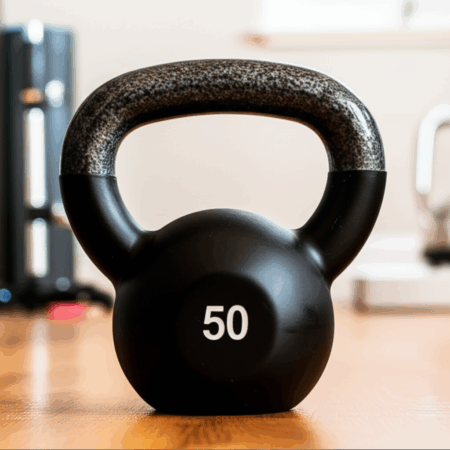The fitness industry is undergoing a seismic shift, driven by rapid technological advancements and evolving consumer preferences. As we approach 2034, the integration of advanced technologies is revolutionizing the at-home fitness experience, creating unprecedented opportunities and demanding innovative competitive strategies from fitness equipment manufacturers. This article explores the key trends shaping the fitness equipment market, the technologies fueling its transformation, and the strategies companies can employ to thrive in this dynamic landscape.
The Evolving Fitness Landscape
Several factors are converging to drive growth and change in the fitness equipment market:
- Increasing Health Consciousness: A growing awareness of the importance of physical activity for overall well-being is prompting more individuals to adopt healthier lifestyles. This includes regular exercise, weight management, and improved body stamina.
- Rising Obesity Rates: The increasing prevalence of obesity and related health concerns is a critical driver, pushing individuals to seek effective ways to lose weight and improve their health through home fitness equipment.
- Technological Advancements: Innovations in smart technology, AI, VR, and connected fitness are transforming the way people exercise, offering personalized and engaging workout experiences.
- Demand for Convenience: Busy lifestyles and a desire for convenience are fueling the popularity of at-home fitness solutions, allowing individuals to exercise on their own schedule and in the comfort of their homes.
- Growing Disposable Incomes: Rising disposable incomes, particularly in regions like Asia-Pacific, are enabling more consumers to invest in fitness equipment and gym memberships.
- Corporate Wellness Programs: Many companies now recognize the importance of employee health and well-being, leading to investments in on-site fitness facilities and corporate wellness initiatives.
Market Size and Growth Projections
The global fitness equipment market is experiencing robust growth, with various reports projecting significant expansion in the coming years. Here’s a snapshot of the market size and growth forecasts:
- 2022: USD 16.04 billion
- 2024: USD 11.2 billion to USD 19.26 billion
- 2025: USD 12.88 billion to USD 18.9 billion
- 2030: USD 24.93 billion to USD 25.17 billion
- 2034: USD 31.1 billion to USD 33.21 billion
The market is expected to grow at a compound annual growth rate (CAGR) of approximately 3% to 5.7% between 2025 and 2034.
Regional Market Dynamics
The fitness equipment market exhibits diverse regional dynamics:
- North America: Currently dominates the market due to high health awareness, technological advancements, and the impact of COVID-19, which accelerated the shift towards home-based workouts.
- Asia-Pacific: Poised for substantial growth due to rapid urbanization, increasing disposable incomes, and government investments in gym facilities. India and China are emerging as the fastest-growing markets in the region.
- Europe: A strong market characterized by a focus on health and wellness, extensive gym networks, and a preference for quality equipment.
- Latin America, Middle East, and Africa: Expected to contribute to market growth, albeit at a slower pace compared to other regions.
Advanced Technologies Revolutionizing At-Home Fitness
Advanced technologies are fundamentally changing the way people approach fitness, particularly in the at-home segment.
Artificial Intelligence (AI)
AI is playing an increasingly significant role in personalizing and enhancing the fitness experience.
- AI-Powered Personal Training: AI algorithms analyze user data, including performance metrics, genetic information, dietary habits, and lifestyle factors, to provide personalized workout and nutrition recommendations.
- Real-Time Feedback and Form Correction: AI-powered systems analyze movement in real-time, providing coaching cues to improve form, minimize the risk of injury, and accelerate progress.
- Adaptive Workouts: AI algorithms adjust workout intensity, duration, and type based on user performance and feedback, ensuring continuous improvement and preventing plateaus.
- Smart Equipment: AI is integrated into fitness equipment, offering real-time feedback, tracking progress, and adjusting workouts based on individual goals and performance.
Virtual Reality (VR) and Augmented Reality (AR)
VR and AR technologies are creating immersive and engaging fitness experiences.
- Immersive Workouts: VR systems transport users to virtual environments, making cardio sessions feel like adventures.
- Gamification: VR and AR platforms combine elements of gaming with exercise, making workouts fun and interactive.
- Interactive Training: AR overlays digital information onto the real world, creating interactive workout experiences where users can follow virtual trainers and receive real-time feedback on their form and technique.
- VR Gyms: Fully immersive gym experiences combine virtual reality, hardware, game design, and exercise.
Wearable Technology and IoT
Wearable devices and IoT-enabled equipment are providing users with real-time data and connectivity.
- Real-Time Data Tracking: Fitness trackers, smartwatches, and heart rate monitors provide users with real-time data on their physical activity, heart rate, sleep patterns, and more.
- Connected Equipment: IoT-enabled fitness equipment tracks metrics like calories burned, heart rate, and repetitions, allowing users to monitor progress, stay motivated, and engage in virtual fitness challenges.
- Smart Apparel: High-tech clothing analyzes running gait in real-time, monitors muscle fatigue during weightlifting, and adjusts compression levels to optimize blood flow.
Smart Home Gyms
Smart home gyms are all-in-one systems that integrate advanced technology with personalized workout solutions.
- Digital Resistance: Smart home gyms replace bulky weights with digital resistance technology that adjusts automatically based on user performance.
- Compact Design: These systems offer a space-saving alternative to traditional fitness setups, making them ideal for home offices, apartments, and smaller workout spaces.
- Guided Training Programs: Smart home gyms offer expert-led workouts tailored to personal goals.
Personalized and Custom Fitness Equipment
Custom fitness equipment is emerging as the future of gym design, offering personalized experiences and innovative solutions.
- Tailored Solutions: Custom equipment addresses the diverse needs of individuals, tailoring to unique body types and specific fitness goals.
- Enhanced User Experience: Custom equipment provides tailored settings, such as adjustable seat heights and lumbar support, reducing discomfort and enhancing workout quality.
- Smart Integration: Technology seamlessly integrates with custom equipment, providing real-time performance tracking and personalized workout programs.
Competitive Strategies for Success in the Fitness Equipment Market
To thrive in the evolving fitness equipment market, companies must adopt innovative competitive strategies:
Focus on Technological Innovation
- Invest in R&D: Continuously invest in research and development to create cutting-edge fitness equipment that integrates the latest technologies, such as AI, VR/AR, and IoT.
- Develop Smart and Connected Equipment: Offer equipment that can track user performance, provide personalized feedback, and connect with other devices and platforms.
Personalization and Customization
- Offer Personalized Workout Programs: Provide AI-powered personalized workout plans that adapt to individual fitness levels, goals, and preferences.
- Create Custom Fitness Solutions: Offer customizable equipment that caters to unique body types and specific fitness goals.
Emphasize User Engagement and Experience
- Develop Immersive Fitness Experiences: Integrate VR/AR technologies to create engaging and interactive workout environments.
- Provide Real-Time Feedback and Coaching: Implement AI-powered systems that offer real-time feedback on form and technique, helping users improve their performance and prevent injuries.
Target Specific Market Segments
- Home Consumers: Cater to the growing demand for at-home fitness solutions by offering compact, space-saving equipment and virtual training platforms.
- Commercial Gyms and Fitness Centers: Provide high-quality, technologically advanced equipment that meets the needs of diverse clientele.
- Older Generations: Focus on helping seniors stay fit by offering virtual and augmented reality workouts that can be done from anywhere, at any level.
Build Strategic Partnerships
- Collaborate with Technology Companies: Partner with technology companies and content providers to enhance product offerings and integrate digital platforms.
- Establish Partnerships with Fitness Influencers: Collaborate with fitness influencers to promote products and reach a wider audience.
Prioritize Sustainability
- Develop Eco-Friendly Equipment: Use sustainable materials and designs that consume less energy to address the environmental concerns of potential buyers.
Expand Distribution Channels
- Leverage E-Commerce Platforms: Utilize online retail channels to reach a wider customer base and provide competitive pricing.
- Offer Omni-Channel Experiences: Combine online and offline channels to meet the needs of a wide variety of consumers.
Focus on Value and Affordability
- Provide Value-Oriented Fitness Solutions: Offer affordable fitness equipment that meets the needs of budget-conscious consumers.
- Offer Subscription-Based Services: Provide subscription-based services that give consumers access to a variety of workout programs and equipment.
Challenges and Opportunities
Despite the optimistic outlook, the fitness equipment market faces several challenges:
- High Initial Costs: The high cost of advanced fitness equipment can be a barrier to entry for some consumers.
- Competition from Low-Cost Brands: Increasing competition from low-cost brands can put pressure on profit margins.
- Equipment Storage Issues: The limited space in many homes can make it difficult to store bulky fitness equipment.
- Lack of User Knowledge: Lack of user knowledge about equipment functionality can limit product adoption.
However, these challenges also present opportunities for companies to innovate and differentiate themselves:
- Develop More Affordable Solutions: Create more affordable fitness equipment that makes advanced technology accessible to a wider range of consumers.
- Offer Space-Saving Designs: Design compact, multi-functional equipment that is ideal for small spaces.
- Provide User-Friendly Interfaces and Training: Offer intuitive interfaces and comprehensive training programs that make it easy for users to operate equipment and achieve their fitness goals.
- Capitalize on the Growing Popularity of Home Fitness: Focus on developing innovative home fitness solutions that meet the evolving needs of consumers.
Conclusion: Embracing the Future of Fitness
The fitness equipment market is on the cusp of a technological revolution. As we move towards 2034, advanced technologies will continue to transform the at-home fitness experience, creating unprecedented opportunities for companies that embrace innovation and adapt to evolving consumer preferences. By focusing on technological innovation, personalization, user engagement, and strategic partnerships, fitness equipment manufacturers can position themselves for long-term success in this dynamic and rapidly growing market. By embracing the future of fitness, gyms can differentiate themselves, cater to diverse needs, and unlock the full potential of their clientele.







